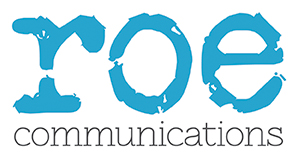Every business school hopes that its meticulously crafted media stories will capture journalists’ attention, generate coverage, and reach the right audiences.
But sometimes, despite best efforts, stories don’t land.
This can be particularly frustrating, especially when people have invested time and energy in a project.
It can leave business schools wondering what they are doing wrong.
Don’t worry!
The first thing to say is that they are not alone. This situation is more common than you might think.
The second thing to remember is that this stuff is hard.
Media outlets are increasingly turning to advertorial instead of editorial.
The number of journalists writing has diminished, and the number of business schools and consultancies vying for space has increased.
Journalists have just seconds to review an email and decide whether a story is for them.
What to do next
All of that said, if a business school has noticed a drop-off in media hits, there are some steps they can take.
1. Pause and evaluate
Business schools can ask: why is this story not resonating? Is it relevant to the journalist’s beat or audience? Is the timing off? Sometimes a story may be strong in content but weak in newsworthiness, or it may not align with what editors are looking for.
2. Refine the pitch
Even compelling stories can fail if they aren’t communicated effectively. A strong pitch is concise, clear, and immediately communicates the value of the story. Journalists are inundated with emails daily, so a business school’s pitch should answer these questions quickly:
- Why does this matter?
- Who is impacted?
- Why now?
3. Leverage storytelling techniques
Journalists respond to stories with a human element, unique insight, or fresh data. Case studies, personal narratives, or exclusive research can turn a routine announcement into a story that captures attention. Business schools should avoid jargon-heavy content and focus on the aspects that make their story compelling, timely, and relatable.
4. Build stronger relationships with journalists
A cold email rarely works. Business schools should engage with reporters before they pitch.
They can comment on their work, share insights, and get to know the kinds of stories they are covering. By establishing rapport, they increase the likelihood that your pitches will be read and taken seriously.
Personalised outreach often outperforms mass emails, and journalists are more likely to consider stories from sources they know and trust.
5. Analyse and adapt based on feedback
If stories are repeatedly ignored, business schools should look for patterns.
Are certain types of stories performing better than others? Are particular formats, topics, or approaches more likely to generate coverage? Learning from previous attempts allows them to tweak their approach rather than repeating the same strategies.
6. Rethink their strategy
Sometimes, the issue isn’t the story itself, but the channel or the audience. Business schools should consider leveraging other platforms – social media, thought leadership pieces, blogs, or industry publications – to build credibility and attract media attention indirectly.
A strong presence online can make journalists more receptive when they pitch similar stories in the future.
In summary
If your media stories aren’t landing, it’s not the end of the road. By improving relevance, refining your pitch, leveraging storytelling, nurturing journalist relationships, and learning from feedback, you can increase the chances of your stories gaining traction.
And remember that media success often comes from persistence, adaptation, and understanding what journalists truly need – not just what you want to share.


